
ACS ES&T Engineering
Scope & Guideline
Empowering Researchers to Tackle Today's Engineering Challenges.
Introduction
Aims and Scopes
- Environmental Remediation Techniques:
Research on novel methods for the remediation of contaminated environments, including soil and water treatment technologies, utilizing advanced oxidation processes, bioremediation, and electrochemical methods. - Wastewater Treatment Innovations:
Focus on innovative approaches to wastewater treatment, including anaerobic digestion, membrane bioreactors, and electrochemical systems, aimed at improving efficiency and reducing environmental impacts. - Resource Recovery and Waste Valorization:
Studies that explore the conversion of waste materials into valuable resources, such as energy, nutrients, and materials, with an emphasis on sustainability and circular economy principles. - Advanced Material Development:
Research on the development of advanced materials for environmental applications, including nanomaterials and engineered adsorbents, targeting pollutant removal and resource recovery. - Machine Learning and Data-Driven Approaches:
Integration of machine learning and data analytics in environmental engineering to enhance predictive capabilities, optimize processes, and improve decision-making in environmental management. - Sustainable Energy Systems:
Exploration of sustainable energy technologies, including solar-driven processes and energy recovery methods, aimed at reducing environmental footprints and enhancing resource efficiency.
Trending and Emerging
- Electrochemical and Photocatalytic Processes:
There is a rising interest in electrochemical and photocatalytic methods for pollution degradation and resource recovery, driven by their efficiency and potential for sustainable applications. - Microbial Technologies in Waste Treatment:
Research on microbial processes, including anaerobic digestion and bioelectrochemical systems, is gaining momentum as effective strategies for waste treatment and biogas production. - Circular Economy and Sustainable Practices:
A strong emphasis on circular economy principles is evident, with studies focusing on resource recovery, waste valorization, and sustainable practices across various sectors. - Advanced Sensing and Monitoring Techniques:
Emerging trends include the development of advanced sensing technologies for real-time monitoring of pollutants and environmental conditions, enhancing the ability to manage environmental impacts. - Machine Learning Applications:
The integration of machine learning and artificial intelligence in environmental engineering is becoming a key focus, aiding in predictive modeling, optimization, and innovative solutions.
Declining or Waning
- Traditional Chemical Treatments:
Research on conventional chemical treatment methods for pollution control is becoming less prominent, as newer, more sustainable alternatives gain traction. - Single-Focus Studies:
There is a noticeable reduction in studies focusing solely on single pollutants or isolated treatment methods, with a shift towards integrated approaches that address multiple contaminants and processes. - Static Models and Theoretical Frameworks:
The application of static models in environmental processes is waning, as dynamic and adaptive modeling approaches that incorporate real-time data and machine learning are preferred.
Similar Journals

Hemijska Industrija
Exploring the Frontiers of Chemical EngineeringHemijska Industrija, an esteemed journal published by the Association of Chemical Engineers of Serbia, serves as a critical platform for advancing knowledge in the fields of chemical engineering and chemistry since its inception in 1989. With an Open Access policy adopted in 2017, the journal provides global access to cutting-edge research and innovative findings, enhancing visibility for authors and fostering collaboration among researchers, professionals, and students alike. This peer-reviewed journal currently holds a Q3 ranking in both Chemical Engineering (miscellaneous) and Chemistry (miscellaneous) categories, signifying its growing impact in these fields. Published in Belgrade, Serbia, Hemijska Industrija not only disseminates high-quality articles from various disciplines within chemical science but also emphasizes interdisciplinary approaches and practical applications, making it an invaluable resource for anyone seeking to stay at the forefront of chemical innovations.

ChemEngineering
Advancing Chemical Engineering Knowledge for a Sustainable FutureChemEngineering is a prominent open-access journal published by MDPI that has been dedicated to the dissemination of high-quality research in the field of chemical engineering since its inception in 2017. Operating out of Switzerland, this journal addresses a diverse range of topics, including energy production, process optimization, and innovations in materials science, thereby attracting contributions from researchers and professionals worldwide. With an impressive Q2 ranking in Chemical Engineering and Engineering, as well as a Q3 ranking in Energy for 2023, ChemEngineering is positioned as a crucial platform for advancing knowledge in its fields. The journal's commitment to open access ensures that its content is readily available to a broad audience, promoting the free exchange of ideas and fostering collaborations. Researchers, professionals, and students alike benefit from the journal's focus on cutting-edge research, making it an essential resource for anyone interested in the ever-evolving landscape of chemical engineering.
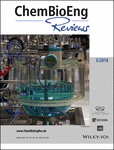
ChemBioEng Reviews
Elevating Research in Biochemistry and Chemical EngineeringChemBioEng Reviews is a premier academic journal dedicated to advancing the fields of biochemistry, bioengineering, and chemical engineering. Published by WILEY-V C H VERLAG GMBH, this journal serves as an essential platform for researchers and professionals seeking to disseminate groundbreaking insights and innovations. With a remarkable impact factor and a solid reputation, it is ranked in the top quartile (Q1) across multiple disciplines, including Biochemistry, Bioengineering, and Industrial and Manufacturing Engineering. The journal's comprehensive scope covers the synthesis, analysis, and application of bioengineered solutions, making it a vital resource for anyone involved in process chemistry and technology. With an unwavering commitment to high-quality scientific discourse from 2014 to 2024, ChemBioEng Reviews is not only pivotal for the academic community but also contributes to industry advancements in filtration, separation processes, and the intersection of chemical and biological engineering.
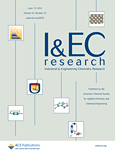
INDUSTRIAL & ENGINEERING CHEMISTRY RESEARCH
Advancing the Frontiers of Chemical Engineering ResearchINDUSTRIAL & ENGINEERING CHEMISTRY RESEARCH, published by the American Chemical Society, is a pivotal journal that disseminates high-quality research in the fields of Chemical Engineering, Chemistry, and Industrial and Manufacturing Engineering. With an impressive impact factor, this journal ranks in the top quartile (Q1) across multiple categories, reflecting its significance and influence within the scientific community. Since its inception in 1987, IECR has provided a platform for researchers, professionals, and students to publish innovative findings that advance the understanding and application of engineering chemistry. Though it operates under a subscription model, the journal continues to foster collaboration within the field, inviting contributions that span theoretical advancements, experimental studies, and practical applications. Whether you are engaged in academia or industry, IECR serves as a vital resource for staying abreast of the latest developments in chemical and engineering research.
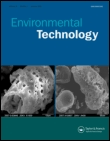
ENVIRONMENTAL TECHNOLOGY
Exploring the Frontiers of Environmental Science and TechnologyENVIRONMENTAL TECHNOLOGY, published by Taylor & Francis Ltd, is a prominent journal that serves as a crucial platform for disseminating pioneering research in the multifaceted fields of Environmental Science, Water Science and Technology, and Waste Management. With an impressive record spanning over three decades from 1990 to 2024, the journal holds significant rankings in various categories, including Q3 in Environmental Chemistry and Q2 in both Medicine (miscellaneous) and Water Science and Technology for 2023. Its Scopus rankings further position it within the top tiers of Environmental Science disciplines, reflecting its influence and relevance, particularly as it pertains to pressing global environmental challenges. While the journal does not offer an open access option, it remains dedicated to advancing knowledge and promoting innovative solutions among researchers, professionals, and students engaged in environmental studies. As it continues to attract high-quality submissions, ENVIRONMENTAL TECHNOLOGY plays a vital role in shaping future research and practices aimed at sustainable environmental management.
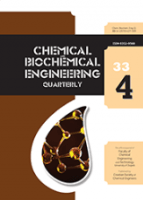
CHEMICAL AND BIOCHEMICAL ENGINEERING QUARTERLY
Exploring the Frontiers of Chemical and Biochemical ResearchCHEMICAL AND BIOCHEMICAL ENGINEERING QUARTERLY, published by the Croatian Society of Chemical Engineering Technology, is a distinguished open-access journal that has been providing a platform for the dissemination of innovative research since its inception in 1987. With a focus on the fields of biochemistry and chemical engineering, this quarterly journal addresses a wide array of topics, including process chemistry and technology, making significant contributions to both academia and industry. Despite its current positioning in the Q4 category for biochemistry and Q3 for miscellaneous chemistry and process chemistry in 2023, the journal continues to strive for greater impact, catering to researchers, professionals, and students alike. Its open-access model, in place since 2001, ensures that cutting-edge research is accessible to a broad audience, fostering collaboration and knowledge sharing within the scientific community. By promoting high-quality research and providing insights into the latest advancements, Chemical and Biochemical Engineering Quarterly remains an essential resource for those involved in the chemical and biochemical engineering disciplines.
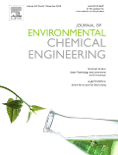
Journal of Environmental Chemical Engineering
Pioneering research for a sustainable future.Journal of Environmental Chemical Engineering, published by Elsevier in the United Kingdom, stands at the forefront of integrative research in the field of environmental science and engineering. With an impressive impact factor that places it in the top quartile (Q1) across multiple categories, including Chemical Engineering (Miscellaneous), Pollution, and Waste Management, it serves as a vital resource for researchers and professionals dedicated to advancing sustainable chemical processes and technologies. Since its inception in 2013, this journal has continually focused on fostering innovation and disseminating knowledge that addresses global environmental challenges. With rankings that highlight its influence—22nd in Environmental Science & Pollution and 11th in Process Chemistry & Technology—the journal publishes high-quality articles that span both theoretical investigations and applied research. This dedication to excellence culminates in a comprehensive platform that not only shares significant advancements but also shapes the future directions of environmental chemical engineering.
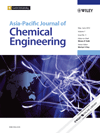
Asia-Pacific Journal of Chemical Engineering
Innovating the Future of Chemical Engineering in the Asia-Pacific.The Asia-Pacific Journal of Chemical Engineering, published by WILEY, serves as a vital forum for the dissemination of innovative research in the interdisciplinary domains of chemical engineering, renewable energy, sustainability, and waste management. Established in 2006, this esteemed journal has achieved a notable impact factor that reflects its commitment to advancing knowledge and practices within the chemical engineering community. With its Q3 category rankings across various fields, including Chemical Engineering (Miscellaneous), Renewable Energy, Sustainability and the Environment, and Waste Management and Disposal, the journal holds a significant position among its peers, assuring readers of quality and relevance in published content. Although it does not offer Open Access options, the Asia-Pacific Journal of Chemical Engineering remains an essential resource for researchers, professionals, and students aiming to stay at the forefront of innovations affecting the Asia-Pacific region and beyond. The journal's broad scope covers diverse topics, making it an integral part of the academic landscape from 2006 to 2024.

Environmental Science-Water Research & Technology
Pioneering advancements in environmental water solutions.Environmental Science-Water Research & Technology is a premier journal published by the Royal Society of Chemistry that focuses on the latest research and technological advancements in the field of water science and engineering. Since its inception in 2015, the journal has steadily gained recognition for its rigorous peer-review process and commitment to advancing our understanding of fresh, wastewater treatment, and sustainable water management. With a remarkable 2023 impact factor and consistently achieving Q1 status in both Environmental Engineering and Water Science and Technology categories, this journal ranks within the top percentile of its field, underscoring its pivotal role in fostering innovative solutions to global water challenges. Currently listed as Rank #26/261 in Water Science and Technology and Rank #34/197 in Environmental Engineering by Scopus, it provides an essential platform for researchers, professionals, and students alike. The journal embraces a broad spectrum of topics concerning water research, aiming to bridge the gap between scientific understanding and practical application.
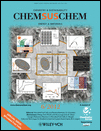
ChemSusChem
Pioneering Research for a Greener FutureChemSusChem is a premier interdisciplinary journal, published by WILEY-V C H VERLAG GMBH, that focuses on the critical fields of Chemical Engineering, Energy, Environmental Chemistry, and Materials Science. Since its inception in 2008, the journal has consistently maintained a Q1 ranking across multiple categories, highlighting its role as a vital resource for researchers and professionals dedicated to advancing sustainable chemical processes and technologies. With an impressive impact factor, it ranks 12th in General Chemical Engineering and is highly regarded within its scopes, indicating the journal's commitment to publishing high-quality, innovative research that addresses global challenges in energy and environmental sustainability. Though it operates on a subscription model, its contributions are essential for those in academia and industry seeking cutting-edge developments in sustainable chemistry. As it approaches its convergence span through 2024, ChemSusChem continues to shape the future of sustainable chemistry, making it a must-read for students, researchers, and practitioners alike.